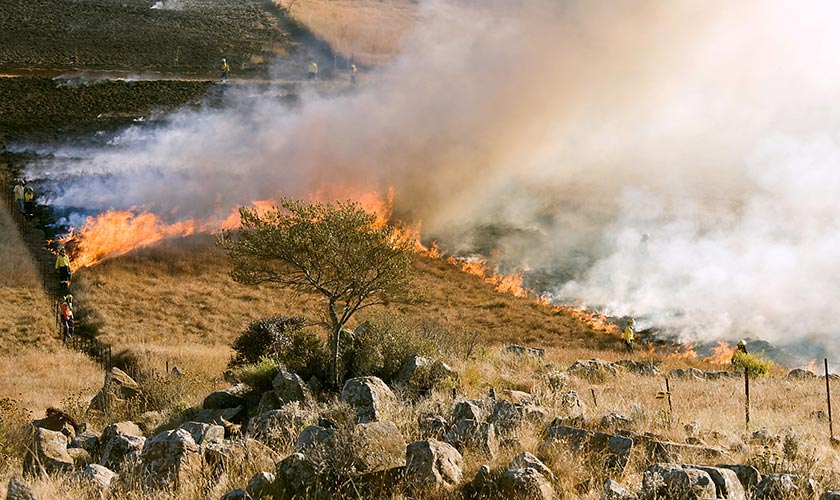The Southwest District Health Emergency Operations Center (SWDH EOC) was activated on 7/30/2018 to monitor the activities in Adams and Washington counties regarding the Mesa and Keithly fires. The SWDH EOC is concerned and planning for public health impacts that will affect residents and responders in these counties. The SWDH EOC will remain activated until further notice.
BROWNLEE PH ALERT
Public Health Alert
In cooperation with the Idaho Department of Environmental Quality (DEQ) and Idaho Power Company, Southwest District Health (SWDH) is issuing a health alert due to the presence of a harmful algal bloom in the Brownlee Reservoir from the Spring Recreation Site near Huntington, Oregon to Brownlee Dam. Recent samples taken indicate high concentrations of toxin producing cyanobacteria (sometimes referred to as blue-green algae) are present and may cause illness to humans and animals.
Cyanobacteria occur naturally. Cyanobacteria blooms occur in waters with high levels of nutrients such as phosphorus and nitrogen. Under certain conditions, some types of algae can release toxins into the water that are harmful to people, pets, and livestock. Recent tests indicate that these toxins are present. The blooms are generally green, or blue-green, and may form thick mats along shorelines. These may look like a surface scum, resembling pea soup and can have an unpleasant odor or stench.
SWDH and DEQ advise the following precautions be taken where cyanobacteria blooms are known to be present:
- Humans, pets, and livestock should not drink the reservoir water.
- Humans and animals should stay out of the reservoir. Swimming, wading, or other activities with full body contact of reservoir water should be avoided.
- Fish should be cleaned and rinsed with clean water. Only the fillet portion should be consumed. All other parts should be discarded.
- Pets and livestock are vulnerable to cyanobacteria and should stay out of water where blooms are visible. Pets and livestock can be exposed to cyanobacteria through drinking, swimming, or self-grooming by licking their wet coat or paws. A reaction will likely require immediate veterinary attention.
- Do not allow pets to eat dried algae.
- If reservoir water contacts skin or pet fur, wash with clean potable water as soon as possible.
- Areas of visible algae accumulation should be avoided.
Samples taken indicate unsafe bacteria cell-counts, so everyone should heed these precautions and avoid contact with the water.
According to the Centers for Disease Control and Prevention, people who are exposed to water with high concentrations of cyanobacteria or cyanotoxins may experience nausea, vomiting, diarrhea, difficulty breathing, skin irritation, allergic responses, liver damage, or neurotoxic reactions such as tingling fingers and toes. Symptoms in humans are rare, but anyone with symptoms should seek medical attention. Boiling or filtering the water will not remove cyanotoxins.
For more information about harmful algal blooms, visit DEQ’s website at http://www.deq.idaho.gov/water-quality/surface-water/recreation-health-advisories/
Lance Holloway, DEQ 208.373.0564 Lance.Holloway@deq.idaho.gov
Katrina Williams, SWDH 208.455.5317 Katrina.Williams@phd3.idaho.gov
